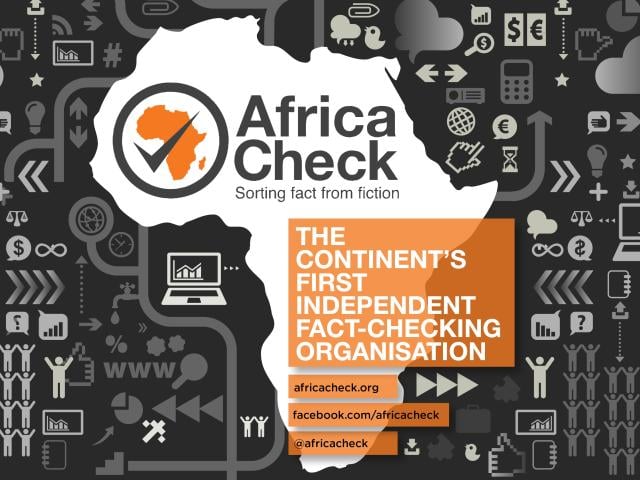-
The chief executive of a health consultancy said on radio that South Africa was the “most obese” country in Africa.
-
But it’s difficult to compare obesity in different countries because some have more complete data than others. And body mass index, the basis of the comparison, is a limited measure of obesity.
-
According to the most reliable estimates, Libya and Egypt have a higher share of obese adults than South Africa. The country is in third place, not first.
In a 5 March 2022 interview on talk radio station 702, host Refiloe Mpakanyane discussed obesity in South Africa with Dr Fundile Nyati, chief executive of health advisory service Proactive Health Solutions.
The headline quote from the interview was Nyati’s claim that South Africa is “the most obese country in Africa”.
Is this accurate? And what does it mean for a country to be “the most obese”? We weighed the evidence.
World Population Review list based on body mass index
Nyati told Africa Check he had made a “slip of the tongue, which sometimes happens in live radio communication”.
He had meant to say that “South Africa is the most obese country in sub-Saharan Africa with Egypt and Morocco the only two ahead of it when we look at Africa as a whole.”
Nyati told us his data was from the World Population Review’s ranking of the most obese countries in 2022.
The World Population Review describes itself as an independent data collection organisation. Its obesity ranking is based on body mass index, or BMI.
It estimates that 28.3% of South African adults are obese. But two other African countries rank higher: it puts Libya’s obesity rate at 32.5% and Egypt’s at 32%. Morocco is lower than South Africa, at 26.1%.
What is obesity?
Rachel Jackson Leach gave Africa Check a definition of obesity. “Obesity is a complex, relapsing, multifactorial disease, characterised by abnormal or excessive body fat that impairs health.”
She is deputy director of research and evidence at the UK-headquartered World Obesity Federation, which describes itself as “the only global organisation focused exclusively on obesity”.
Is body mass index a meaningful measure of obesity?
The World Population Review’s ranking estimates obesity according to body mass index, or BMI.
BMI is used to determine whether a person is overweight or obese. Its calculation is based on weight and height. You can calculate your BMI here.
The BMI approach is simple – perhaps too much so. Rachel Jackson Leach is the deputy director of research and evidence at the World Obesity Federation. She told Africa Check that even Adolphe Quetelet, the mathematician who invented the concept, “was apparently clear at the time that BMI was not a measure of individual health or body fat”.
“An individual with a high BMI who thinks their weight impairs their health should see a healthcare professional who will be able to determine the presence or absence of obesity,” Leach said.
But the calculation is still useful, she said. “It is cheap, simple, can be done at home, and can serve as a screening tool for obesity.” Because of this, it is often used to estimate obesity rates around the world as “it is not feasible for everybody to be evaluated by a healthcare professional for obesity. So, we use BMI.”
The WHO still supports it, while newer approaches largely build on it.
Where does South Africa rank?
The obesity ranking bases its numbers on the World Health Organization’s Global Health Observatory (GHO) and the World Obesity Federation’s Global Obesity Observatory.
The numbers match the GHO’s age-standardised obesity prevalence estimates for 2016, which are the most recent.
Age-standardised estimates make comparison between countries easier as countries may have different age profiles.
But the Global Obesity Observatory records different rates. It estimates adult obesity in South Africa at 26.2% (not 28.3%), Libya at 30.5% (not 32.5%) and Egypt at 35.7% (not 32%).
Experts have previously told us that the WHO has the most reliable data on obesity across the world. So we asked the global health agency about the accuracy of the claim.
Leanne Riley is head of surveillance, monitoring and reporting in the WHO’s noncommunicable diseases department.
She told Africa Check that the WHO considered Libya and Egypt part of its “eastern Mediterranean region”. South Africa, she said, has “one of the highest estimated prevalence of obesity on the African continent, and the highest prevalence among the WHO Africa region”.
The WHO’s Africa region is made up of 47 countries. The African Union has 55 member states.
How accurate is the WHO’s estimate?
The tricky part is that these are estimates, not exact numbers. The closer an estimate is likely to be to reality is reflected by its confidence interval, or CI. “The accuracy of the estimates is considered higher if the CI is narrow and vice versa,” said Riley.
So, while the GHO estimates that South Africa has an obesity prevalence of 28.3% and Egypt 32%, their confidence intervals overlap.
The CI for South Africa is 24.6% to 32.1%, a range of 7.5 percentage points. Egypt’s is 27.6% to 36.6% (9.0 points), and Libya’s range is 10.9 points. South Africa’s CI is the narrowest, suggesting that the estimate of obesity there is the most accurate of the three.
The estimates don’t support Nyati’s claim. According to the most reliable data, South Africa is not the most obese country in Africa. He also gets Morocco’s ranking wrong.
And while South Africa might have the highest obesity prevalence in “sub-Saharan Africa”, this is a controversial geographical construct.
Case closed? No, just quoting these rates overlooks how they were collected.
Caveats about data collected
Leach gave us more context about the WHO’s obesity data. “To be clear, they are estimates not survey data,” she said. But “where comparable surveys are not available these can be more appropriate when ranking”.
An obesity estimate is a (sometimes well-supported) calculation of the likely prevalence of the condition in a country. It would be more accurate to survey everyone in a country, or a large number of them, but this is not always possible. So estimates are often used instead.
Are there better surveys to draw on in South Africa’s case? The 2016 South Africa Demographic and Health Survey (SADHS) by the South African Medical Research Council interviewed more than 10,000 adults. It collected data on several health topics, including obesity.
This kind of survey has both benefits and limitations.
On the plus side, the SADHS is a large survey that uses recorded data, not estimates, to determine obesity prevalence. It also provides related details, which are useful for researchers who want to go beyond BMI when investigating health trends in the country.
In 2016, the SADHS found that 11% of South African men and 41% of South African women were obese. But it also recorded other information like waist circumference, waist-to-height-ratio and eating habits, providing a clearer picture of health in South Africa.
Quality of global data differs significantly
To compile its data, the Global Obesity Observatory used the SADHS survey, as well as other cross-country and obesity-specific surveys and estimates. But the quality of data differs around the world.
“Many countries still rely on irregular one-off studies and so trend evidence on obesity is often poor,” Leach told Africa Check. It also means that surveys aren’t always easily comparable.
For example, the SADHS has only been conducted three times since 1998, while Mexico’s national survey has been conducted far more regularly. By contrast, the observatory’s data on Libya, recorded as having a higher obesity prevalence than South Africa, comes from a WHO survey of just over 3,500 adults, last conducted in 2009.
Not having comparable surveys from similar time periods makes it difficult to reliably rank countries by obesity prevalence. This doesn’t mean comparisons are impossible or that the data should be ignored. The comparisons should simply be seen as imperfect.
Even estimates are affected by such factors, and adjustments made to account for when and how data is collected, Leach said.
Riley said that “you can definitively rank countries” based on estimates. But it is always useful to keep in mind how reliable they are.
Conclusion: South Africa has one of Africa’s highest rates of obesity
A radio talk show recently heard that South Africa was “the most obese country in Africa”.
The most reliable data shows that the country ranks third in Africa.
But these rankings are not perfect. Obesity data is far more complete in some countries than others, and almost all surveys of obesity prevalence rely on body mass index measurements, instead of individual diagnoses.





Good work. I think it's…
Good work. I think it's important to challenge the deeply political, ahistorical perception of North Africa as somehow belonging outside Africa when it arises - along with the misconception that North Africans are ethnically 'Arabs' - which very few are. Many 'sub-Saharan' states extend into the Sahara and there is plenty of ethnic ambiguity around the peoples on either side of it. It's a perception well worth pushing back on.
Add new comment
Add new comment